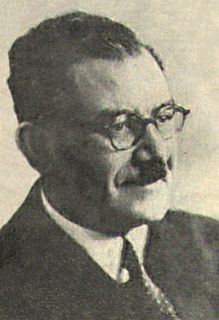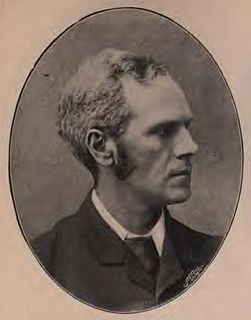Related Research Articles

Sir John Edward Lennard-Jones was a British mathematician and professor of theoretical physics at the University of Bristol, and then of theoretical science at the University of Cambridge. He was an important pioneer in the development of modern computational chemistry and theoretical chemistry.
Proceedings of the Royal Society is the parent title of two scientific journals published by the Royal Society. Originally a single journal, it was split into two separate journals in 1905:

Sir Michael James Lighthill was a British applied mathematician, known for his pioneering work in the field of aeroacoustics and for writing the Lighthill report on artificial intelligence.
Aeroacoustics is a branch of acoustics that studies noise generation via either turbulent fluid motion or aerodynamic forces interacting with surfaces. Noise generation can also be associated with periodically varying flows. A notable example of this phenomenon is the Aeolian tones produced by wind blowing over fixed objects.
Samuel Francis (Frank) Boys was a British theoretical chemist.
Computational aeroacoustics is a branch of aeroacoustics that aims to analyze the generation of noise by turbulent flows through numerical methods.
Henry (Solomon) Lipson CBE FRS was a British physicist. He was Professor of Physics, Manchester Institute of Science and Technology, 1954–77, then Professor Emeritus.
Edmund Clifton Stoner FRS was a British theoretical physicist. He is principally known for his work on the origin and nature of itinerant ferromagnetism, including the collective electron theory of ferromagnetism and the Stoner criterion for ferromagnetism. Stoner made significant contributions to the electron configurations in the periodic table.

John "Shôn" Eirwyn Ffowcs Williams (1935–2020) was Emeritus Rank Professor of Engineering at the University of Cambridge and a former Master of Emmanuel College, Cambridge (1996–2002). He may be best known for his contributions to aeroacoustics, in particular for his work on Concorde. Together with one of his students, David Hawkings, he introduced the far-field integration method in computational aeroacoustics based on Lighthill's acoustic analogy, known as the Ffowcs Williams–Hawkings analogy.

Dr. Ali Moustafa Mosharafa was an Egyptian theoretical physicist. He was professor of applied mathematics in the Faculty of Science at Cairo University, and also served as its first dean. He contributed to the development of the quantum theory as well as the theory of relativity.
The Buckingham is a CGS unit of electric quadrupole, named in honour of the chemical physicist A. David Buckingham who was the first to measure a molecular quadrupole moment. It is defined as 1×10−26 statcoulomb-centimetre2. This is equivalent to 1 Debye-Ångström, where 1 Debye = 1×10−18 statcoulomb-centimetre is the cgs unit of molecular dipole moment and 1 Ångström = 1×10−8 cm.

William Robert Bousfield was a British lawyer, Conservative politician and scientist.
(John) Trevor Stuart FRS is a mathematician and senior research investigator at Imperial College London working in theoretical fluid mechanics, hydrodynamic stability of fluid flows and nonlinear partial differential equations.
Mechanical metamaterials are artificial structures with mechanical properties defined by their structure rather than their composition. They can be seen as a counterpart to the rather well-known family of optical metamaterials. They are often also termed elastodynamic metamaterials and include acoustic metamaterials as a special case of vanishing shear. Their mechanical properties can be designed to have values which cannot be found in nature.
Platonic crystals are periodic structures which are designed to guide flexural wave energy through thin elastic plates.
Edgar Thomas Snowden Appleyard was a physicist and pioneer in the fields of thin films and superconductivity.
Sir Thomas Henry Havelock FRS was an English applied mathematician, hydrodynamicist and mathematical physicist. He is known for Havelock's law (1907).
In aeroacoustics, Lighthill's eighth power law states that power of the sound created by a turbulent motion, far from the turbulence, is proportional to eighth power of the characteristic turbulent velocity, derived by Sir James Lighthill in 1952. This is used to calculate the total acoustic power of the jet noise. The law reads as
In arithmetic and algebra the eighth power of a number n is the result of multiplying eight instances of n together. So:
Leslie S. G. Kovasznay was a Hungarian-American engineer, known as one of the world's leading experts in turbulent flow research.
References
- ↑ Lighthill, M. J. (1952). "On Sound Generated Aerodynamically. I. General Theory". Proceedings of the Royal Society A: Mathematical, Physical and Engineering Sciences. 211 (1107): 564–587. Bibcode:1952RSPSA.211..564L. doi:10.1098/rspa.1952.0060. S2CID 124316233.
- ↑ Lighthill, M. J. (1954). "On Sound Generated Aerodynamically. II. Turbulence as a Source of Sound". Proceedings of the Royal Society A: Mathematical, Physical and Engineering Sciences. 222 (1148): 1–32. Bibcode:1954RSPSA.222....1L. doi:10.1098/rspa.1954.0049. S2CID 123268161.
- ↑ Williams, J. E. F.; Hawkings, D. L. (1969). "Sound Generation by Turbulence and Surfaces in Arbitrary Motion". Philosophical Transactions of the Royal Society A: Mathematical, Physical and Engineering Sciences. 264 (1151): 321. Bibcode:1969RSPTA.264..321W. doi:10.1098/rsta.1969.0031. S2CID 19155680.
- ↑ Curle, N. (1955). "The Influence of Solid Boundaries upon Aerodynamic Sound". Proceedings of the Royal Society A: Mathematical, Physical and Engineering Sciences. 231 (1187): 505–510. Bibcode:1955RSPSA.231..505C. doi:10.1098/rspa.1955.0191. S2CID 122946419.